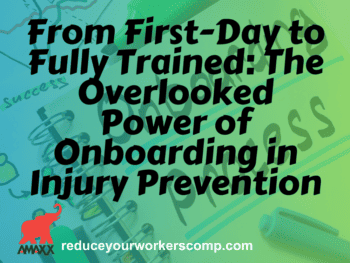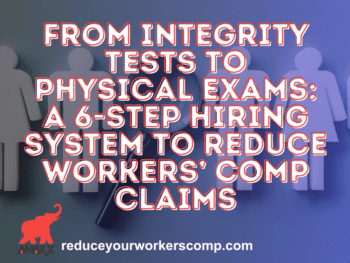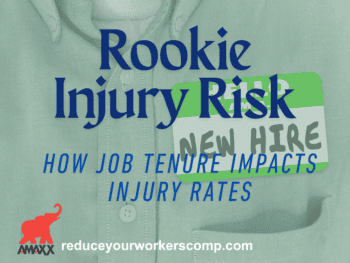
What does OSHA’s new rule mean for employers and TPAs?
OSHA has long required employers to keep a log of certain workplace incidents that result in injury or illness. That basic recordkeeping requirement is not new, but what is new is that OSHA is now asking employers to submit certain forms electronically. That will greatly facilitate the administration’s ability to make employer specific data publicly available. Employers and their third-party administrators (TPAs), including Broadspire, will work closely to make sure the appropriate data is submitted to comply with all applicable OSHA rules. Our mantra as a TPA is “early reporting and early intervention lead to better outcomes.” The new OSHA rule ultimately ties into that.
Click Link to Access Free PDF Download
“4-Step Sequence For Effective Employee Screening, Hiring, & Placement”
Which industries are primarily affected by the new electronic tracking rule?
The new recordkeeping rule applies to a significant number of employers. Under the final rule, employers with 250 or more employees that are required to maintain OSHA injury and illness records must submit their logs, summaries of injuries and illnesses, and incident reports.
Employers with 20 to 249 employees in industries classified as having high rates of occupational injuries and illnesses must submit an electronic summary report. Industries on OSHA’s list include construction, manufacturing, healthcare, transportation and others – all of which are important sources of employment and productivity.
Industries that OSHA considers to have lower injury rates, which include insurance and financial services, and some retail businesses, are partially exempt from such reporting. The reality is, however, that OSHA’s new rule will cover a large number of U.S. employers and their workers.
How does Broadspire see this new rule benefiting employers and workers?
The intent of OSHA’s new final rule is to increase workplace safety and motivate employers to reduce injury and illness for their workers. That is a noble goal and we not only support it; it is at the heart of our business.
Broadspire exists to help employers reduce claims frequency and severity. We believe that the more data an employer has, the better it can plan ahead and mitigate situations that can cause injury or illness. OSHA’s new rule will make more workplace data accessible, which will encourage employers to focus more attention on the causes of occupational injuries and illnesses. That’s a positive thing for all concerned.
Workers will benefit because they will be healthier and safer. Employers will benefit from reduced downtime and increased productivity, which in turn will benefit communities through economic growth. Truly, improving workplace safety pays big dividends, well beyond an employer’s door.
What are the downsides or unintended consequences of the new OSHA rule?
Some observers have expressed concern that online publication of employer-specific reports could create cyber exposures, increase litigation and might even discourage some employers from tracking minor incidents to artificially improve their safety results. While public disclosure may not be the preferred method to motivate employers to improve safety, greater transparency and competitiveness are likely to accelerate changes.
It is our belief that the vast majority of employers required to report to OSHA will submit injury and illness reports fully and accurately. We also believe that the general population of employers will see the data points as helpful to keeping them focused on the big picture, which is to make workplaces safer. We certainly hope that OSHA has considered the implications of this final rule and will swiftly address any problems should they arise.
What is Broadspire doing to help prepare its clients to comply with the rule?
Broadspire is deeply invested in helping employers to improve their claim outcomes and to reduce the costs of workplace injury, illness and disability. Early access to data is key, and TPAs can step up and help employers build out their data sets.
Between the data and benchmarking that we provide, and the reports that OSHA intends to make available, the ultimate objective is to reduce loss costs for the employer and improve the care of the injured worker. It’s a win-win for both employer and employee. Compliance is a big part of what we do every day for our clients, and we are having ongoing conversations with our clients to ensure they submit the appropriate data to OSHA by the July 1, 2017, deadline.
Read more On the FrontLine Magazine.
Danielle Lisenbey, Broadspire President & CEO. As president and CEO, Lisenbey’s goal is to make Broadspire the number one choice for companies seeking claim, disability and medical management services to help increase their employee productivity and contain costs. On the road to excellence, however, Lisenbey knows you don’t have to sacrifice integrity for achievement. She believes in always doing the right thing. Although tough when called for, she prides herself on being fair and demonstrating integrity in everything that she does. https://choosebroadspire.com/us/















